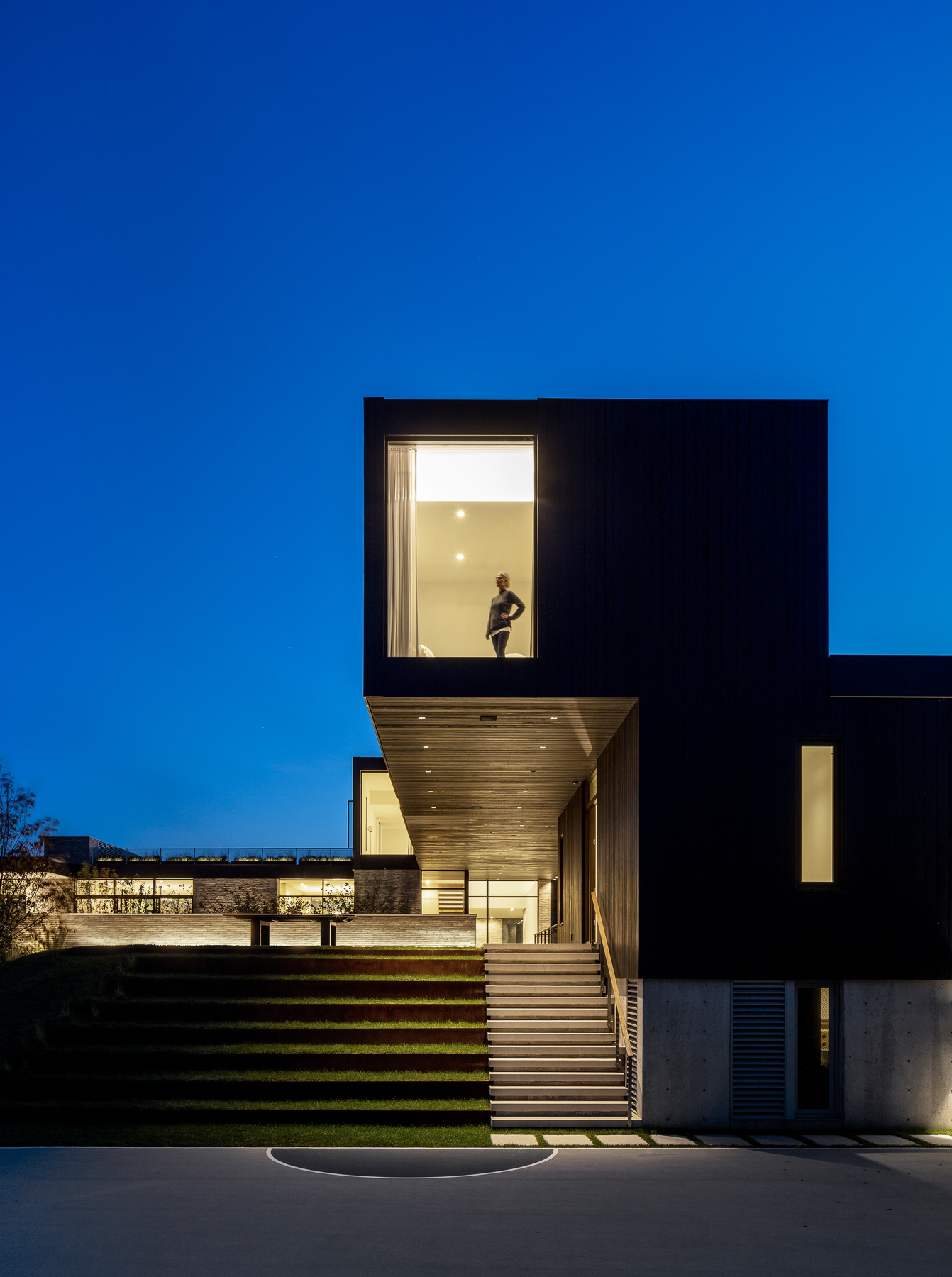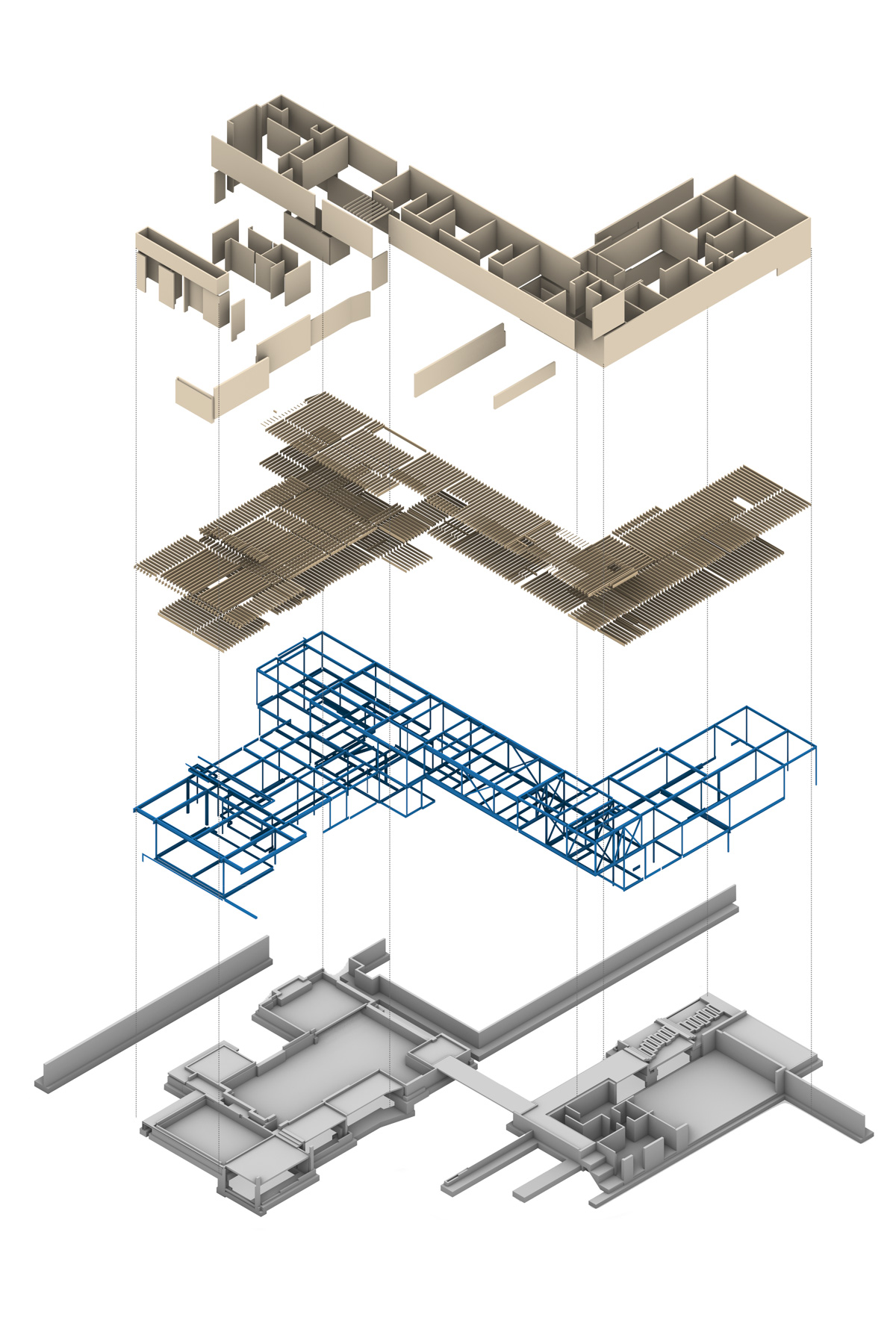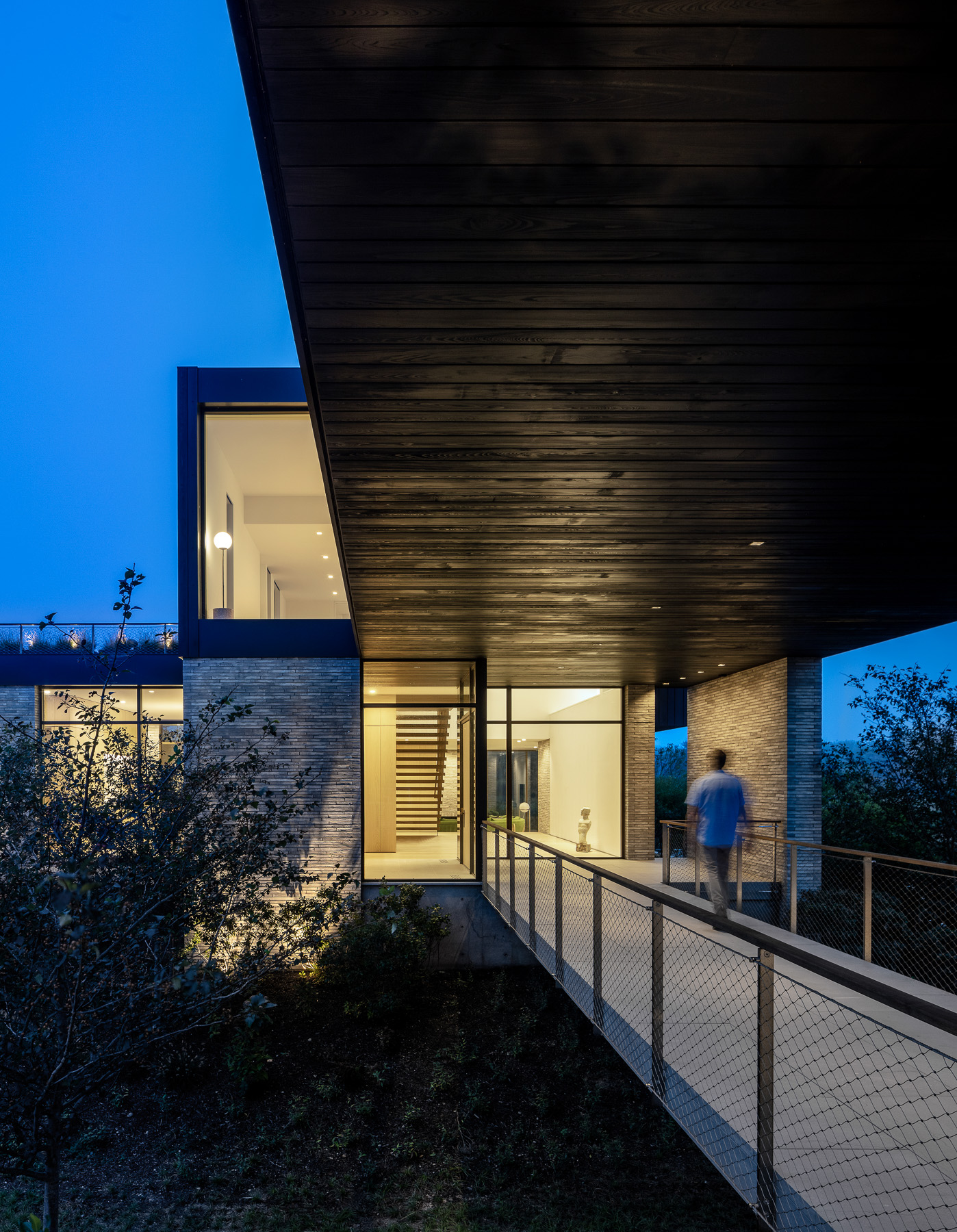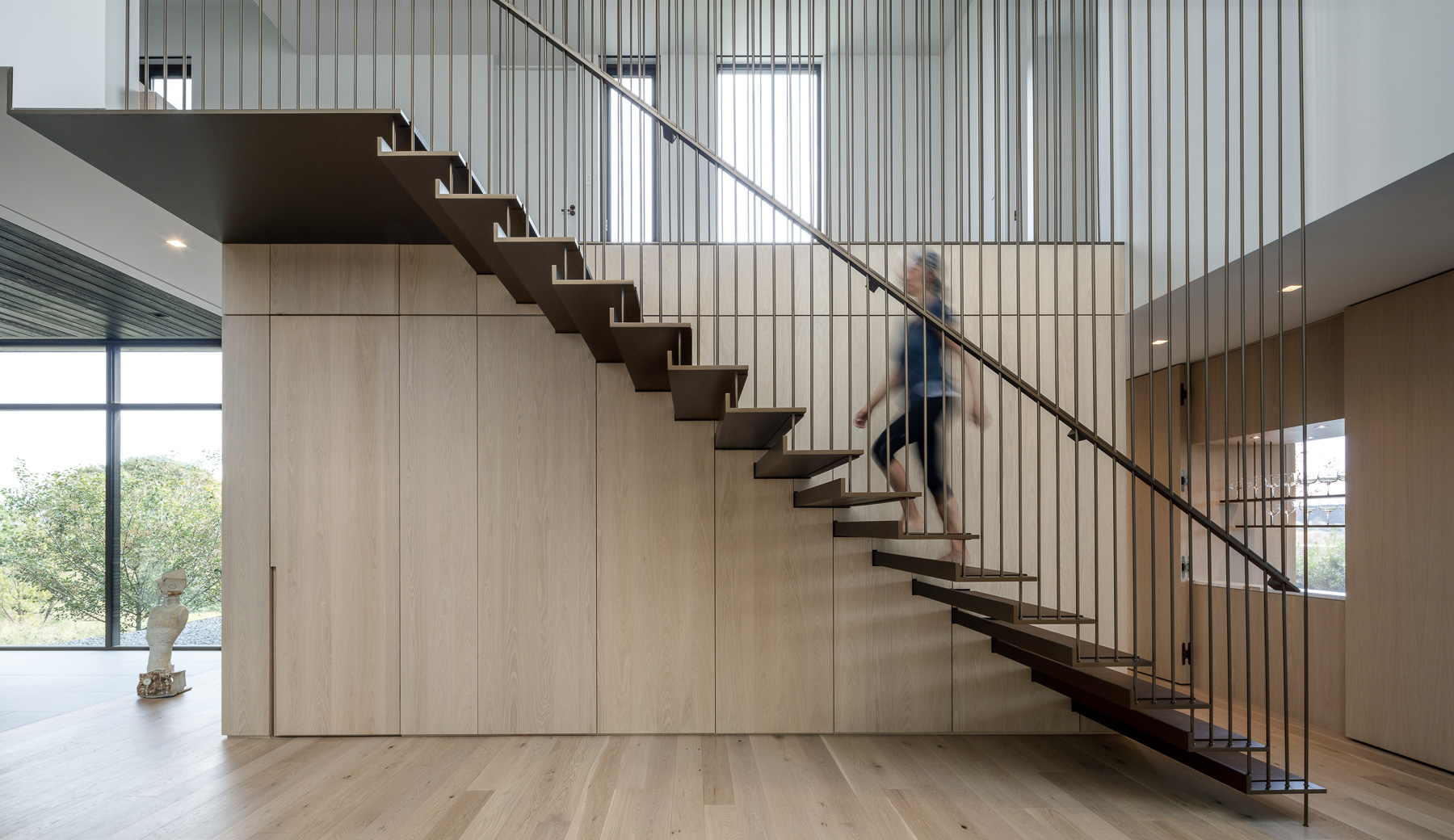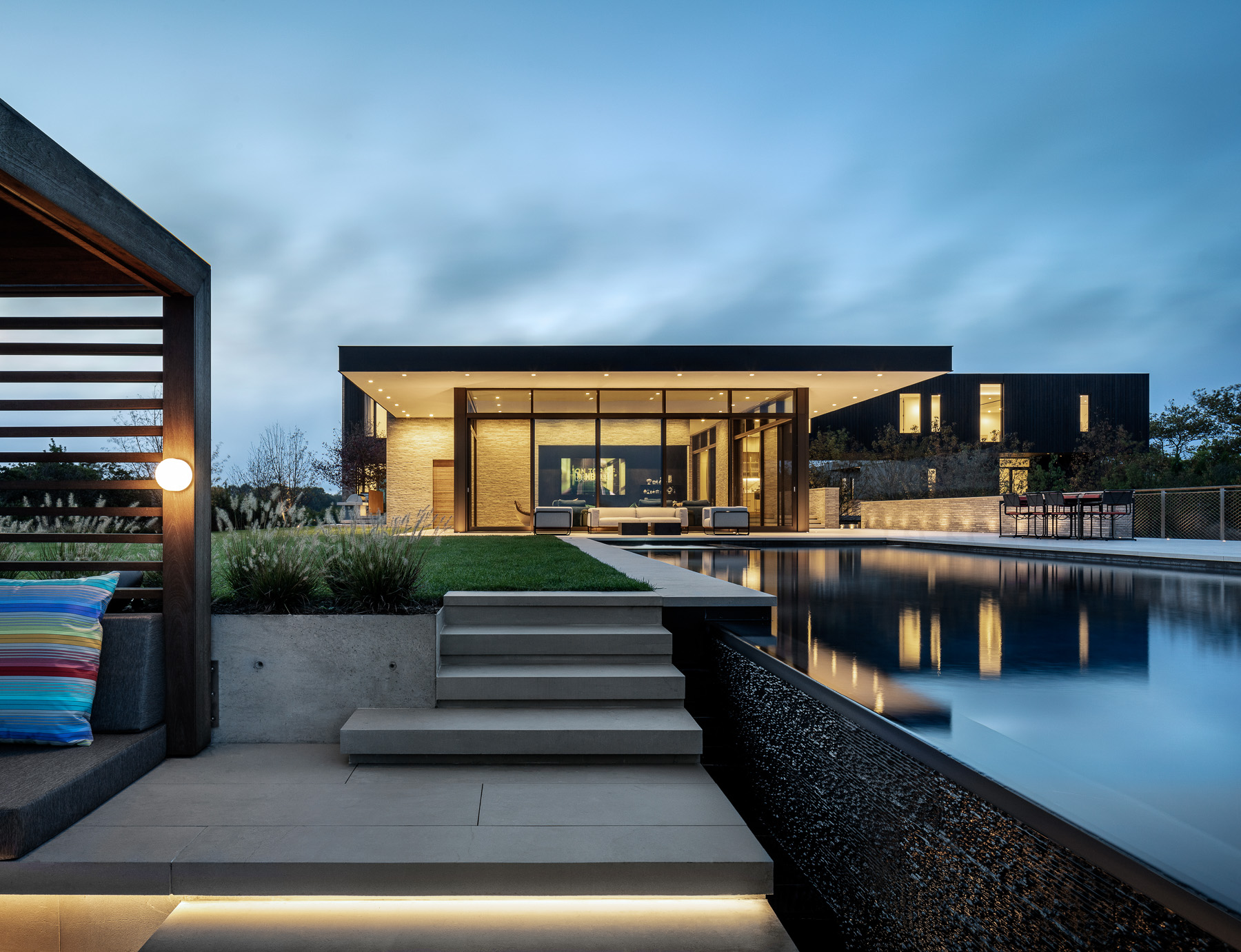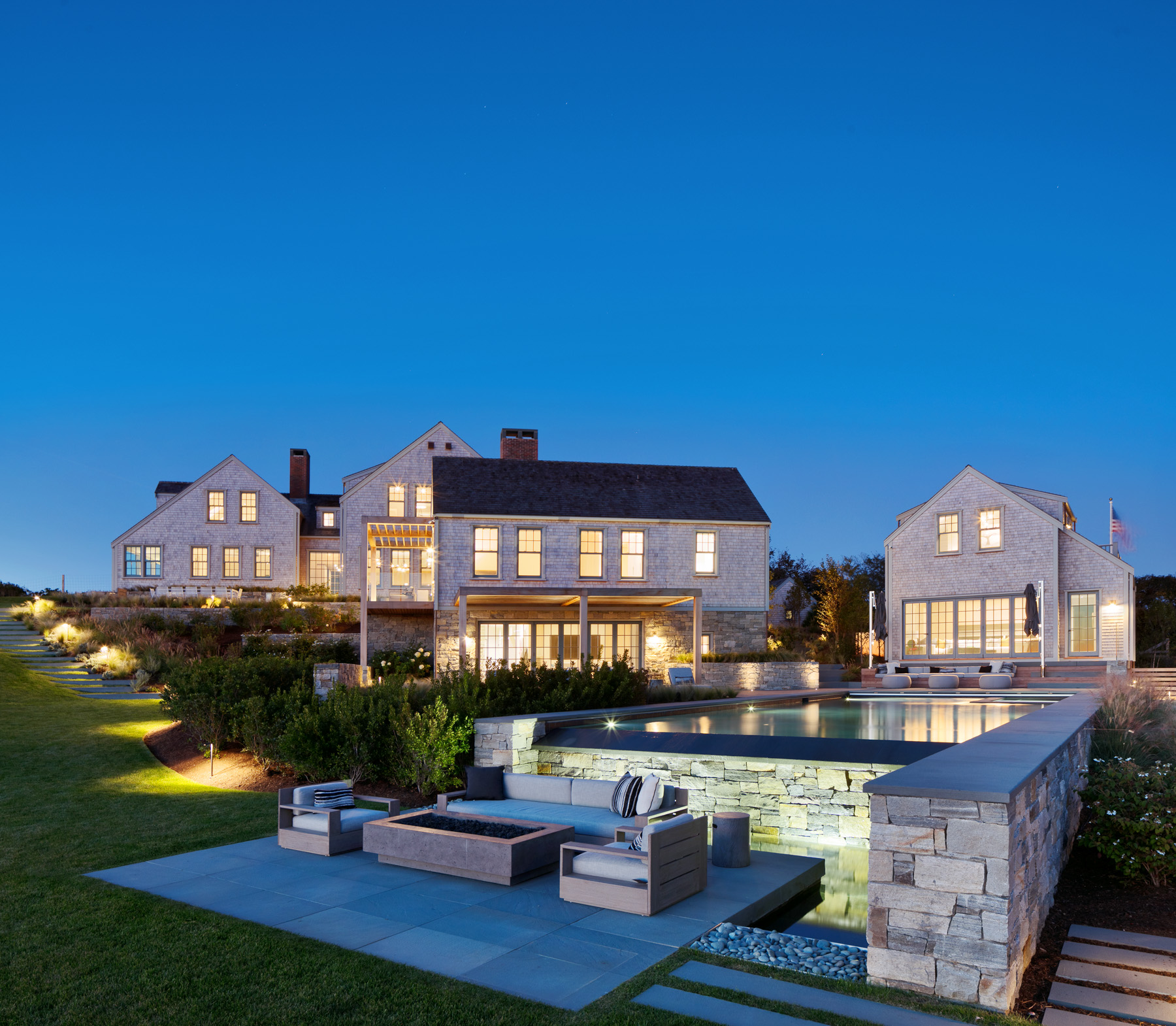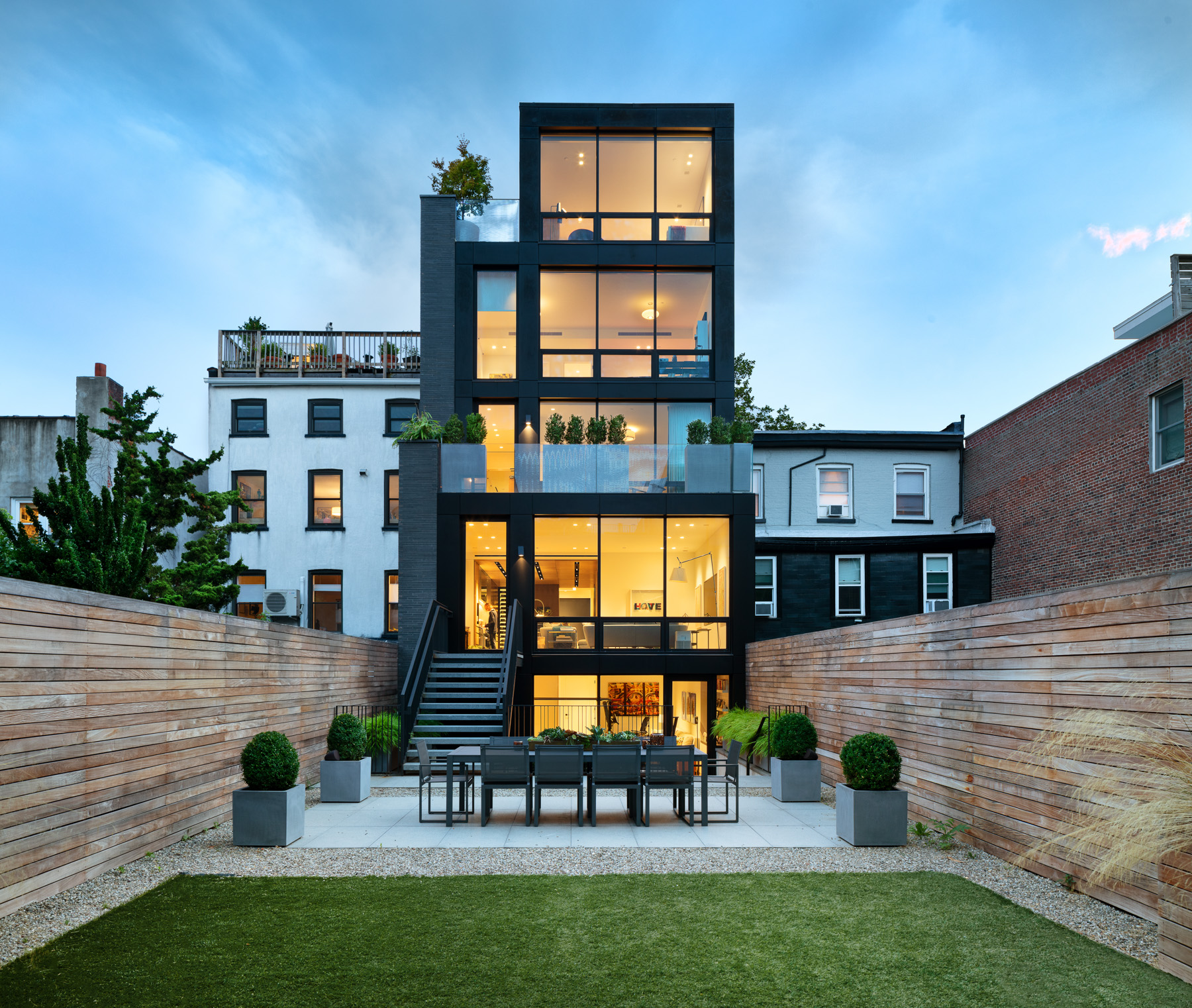The Bridge House earns its moniker from its ambitious second-floor bridge structure that spans from one building mass to another with little in the way of visible support on either end. Architects A+I envisioned two primary building masses as rectilinear structures to support the bridge. Each mass is built into a man-made landscaping mound to create two independent artificial ground planes purposely elevated out of potential flood waters.
At one end, the second-floor bridge disappears into a double-height glazed box. At the other, the bridge lands eccentrically to the building mass below creating a covered entry sequence by means of an exterior staircase. The large window set above the entry assists in visually challenging the perception of the viability of the structure to support its own offset.
Story-high Vierendeel trusses, hiding within the exterior walls of the bridge, accomplish the span between building masses. These trusses rely of the concrete base of each building mass to provide a counterweight to the eccentricity of the bridge. The entirety of the steel frame, including the bridge, then disappears within the wood framing of the floor, ceiling, and wall assemblies.
Inside the two-story glazed abutment at the far end of the bridge is a suspended signature staircase. The stair treads and landing are fabricated from a silicon bronze plate that spans from an interior bearing wall to an array of stainless-steel rods hanging from the roof structure above. CRAFT often plays the role of the Engineer of Record as well as the Engineer for the Stair Fabricator to ensure a continuity of design intent and execution.
On the landscaped mound opposite the entry is a patio and infinity-edge pool. Adjacent to the patio are operable glazed wall panels that create a versatile indoor/outdoor living space depending on season or weather. Stability of the glass box is made possible by a roof plane that laterally cantilevers out of a masonry shear wall set within the interior of the building. With the lateral stability resolved, the corner columns were optimized for slenderness while allowing both the roof plane and the roof terrace above to cantilever to its full extent in each direction without any additional means of support.
PROJECT TEAM
Architect: A+I Architecture Plus Information, General Contractor: Bulgin & Associates

